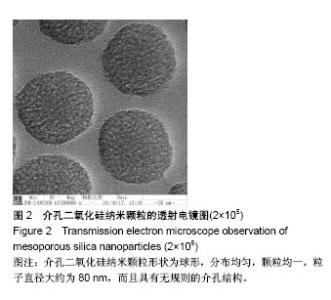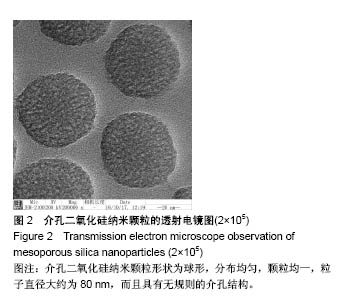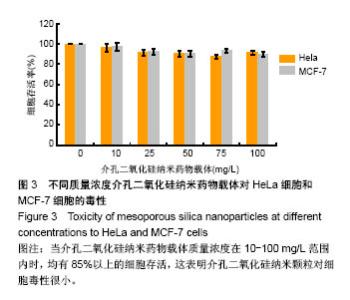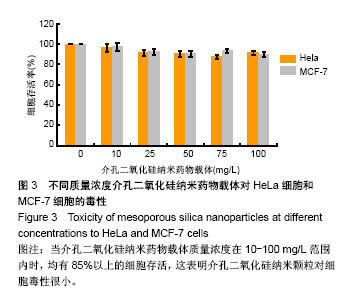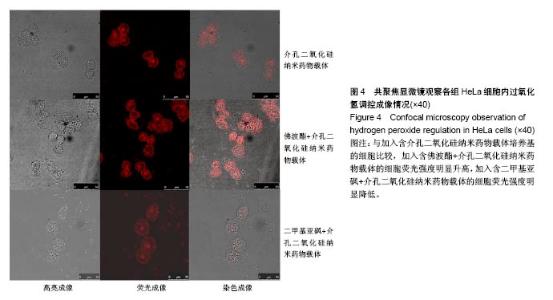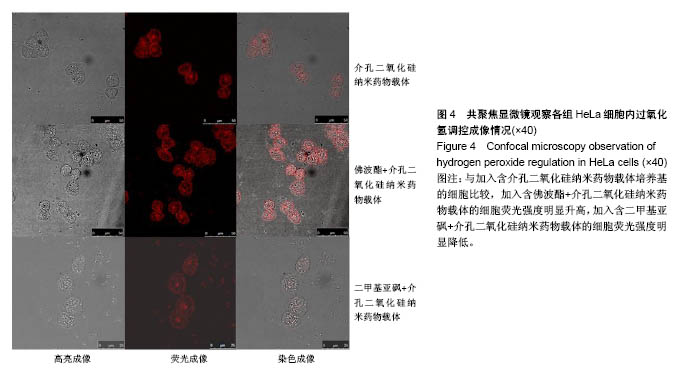| [1] 丁丽娜.具有癌细胞靶向性的碳基荧光介孔硅复合纳米颗粒的制备及生物应用[D].中北大学,2017:1-85.[2] 王子松,尹健,张权,等.一种尺寸可控的介孔二氧化硅纳米载体的制备方法[P].2017.[3] 李玉慧.两种介孔硅材料对布洛芬控制释放的比较研究[D].南华大学,2015:1-62.[4] 李诚意,黄容琴.生物可降解无机介孔纳米材料研究进展[J].药学研究,2017,36(4):222-225. [5] 张玮洵,侯仕强,施金龙.纳米材料介孔硅承载阿霉素在C6胶质瘤中的实验研究[J].交通医学,2017,31(2):108-111,封2.[6] Liu J,Wang C,Wang X,et al.Mesoporous silica coated single-walled carbon nanotube served as drug carrier used for cancer combination therapy.Nanomedicine Nanotechnol Biol Med.2016;12(2):522-523.[7] Lv Y,Li J,Chen H,et al.Glycyrrhetinic acid-functionalized mesoporous silica nanoparticles as hepatocellular carcinoma-targeted drug carrier.Int J Nanomedicine. 2017; 12:4361-4370.[8] 王玉倩,薛秀花.实时荧光定量PCR技术研究进展及其应用[J].生物学通报,2016,51(2):1-6.[9] 钟建斌,雷泽林,唐艳,等.纳米二氧化硅对正常人外周血单个核细胞凋亡的诱导作用[J].中国药理学与毒理学杂志, 2016,30(11): 1176-1181.[10] Yu F,Wu H,Tang Y,et al.Temperature-sensitive copolymer-coated fluorescent mesoporous silica nanoparticles as a reactive oxygen species activated drug delivery system.Int J Pharm. 2018;536(1):11-20.[11] 宋新波.亚细胞器靶向性和固定性荧光探针的设计合成和应用研究[D].大连理工大学,2017:1-211.[12] 陈艳.纳米药物控释体系的设计及在生物医学中的应用[D].中国科学院大学,2015:1-165.[13] 刘少鹏.SNFYMPL 荧光探针结合共聚焦激光显微内镜在胃癌诊断中的应用[D].第四军医大学,2017:1-70[14] 刘彦魁,王晓莉,金琳芳,齐晓薇.肺癌ALK、ROS1基因荧光原位杂交检测技术要点[J].诊断病理学杂志,2018,25(3):229-230,232.[15] 沙婕.基于功能化荧光介孔二氧化硅纳米粒子的金属离子探针的合成与应用[D].东北师范大学,2015.[16] Lewandowski D,Ceglowski M,Smoluch M,et al.Magnetic mesoporous silica Fe3O4@SiO2@meso-SiO2 and Fe3O4@SiO2@meso-SiO2-NH2 as adsorbents for the determination of trace organic compounds. Microporous Mesoporous Mater.2017;240:80-90.[17] 张成森,刘昶,纪艳超,等.荧光探针在胃癌靶向治疗中的研究进展[J].胃肠病学和肝病学杂志,2016,25(11):1211-1213.[18] 鲍光明,王立琦,王小莺,等.MCM-41型介孔纳米材料对氧氟沙星的负载及体外释放[J].中国兽医学报,2016, 36(5):804-808.[19] 刘岩,白晓,李婷婷,等.新型巯基功能化二氧化硅微球的制备及其对银离子的吸附[J].中山大学学报(自然科学版), 2016,55(6): 136-139.[20] 周婕,杨亦文,任其龙.单取代对甲苯磺酰环糊精在树脂上的吸附分离特性[J].应用化学,2006, 23(8):821-825.[21] 潘涛.纳米二氧化硅颗粒对HL-7702细胞的毒性作用及细胞功能的影响[D].吉林大学,2013.[22] You Y,He L,Ma B,et al.High‐Drug‐Loading Mesoporous Silica Nanorods with Reduced Toxicity for Precise Cancer Therapy against Nasopharyngeal Carcinoma.Adv Funct Mater.2017;27(42).DOI: 10.1002/adfm.201703313[23] 刘云.酶响应/激光响应性介孔硅纳米药物控制释放系统的构建及生物学评价[D].重庆大学,2015:1-116.[24] 孙旭阳,刘昶,纪艳超,等.量子点纳米荧光探针在胃癌诊疗中的新进展[J].胃肠病学和肝病学杂志,2016,25(6):609-611.[25] 唐佳民.磷脂包被的中空介孔硅用于抗肿瘤的研究[D].三峡大学, 2016:1-53.[26] Ugazio E,Gastaldi L,Brunella V,et al.Thermoresponsive mesoporous silica nanoparticles as a carrier for skin delivery of quercetin.Int J Pharm.2016;511(1):446-454.[27] 张烜,郭阳,张强.一种载难溶性药物的纳米骨架系统及其制备方法和应用:CN105343006A[P].2016.[28] 陆乃彦,元冰,杨恺.带电多孔二氧化硅纳米颗粒在硫醇/磷脂混合双层膜上的非特异性吸附[J].物理学报, 2013,62(17): 000528-532.[29] 邱满堂,蔡晓冰.介孔二氧化硅纳米颗粒的生物相容性[J].中国组织工程研究,2012,16(38):7156-7160.[30] 赵宁,李冰馨,史泽良,等.介孔二氧化硅包覆金纳米棒增强人三阴性乳腺癌细胞放射敏感性研究[J].中华放射肿瘤学杂志, 2016, 25(9):1003-1007.[31] Yamamoto E,Kuroda K.Colloidal Mesoporous Silica Nanoparticles. Bull Chem Soc Jpn. 2016;89(5):501-539. |
